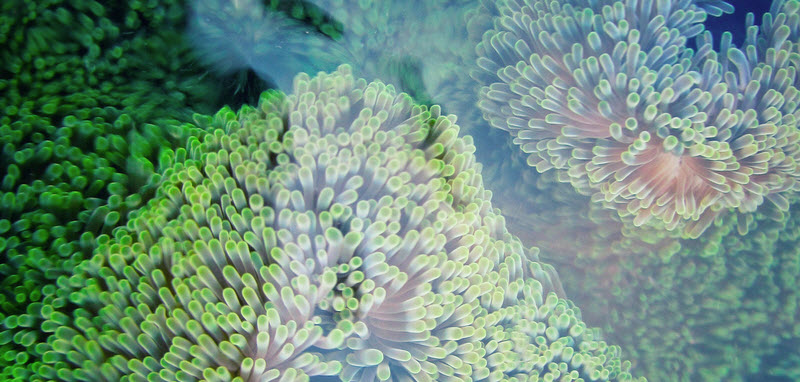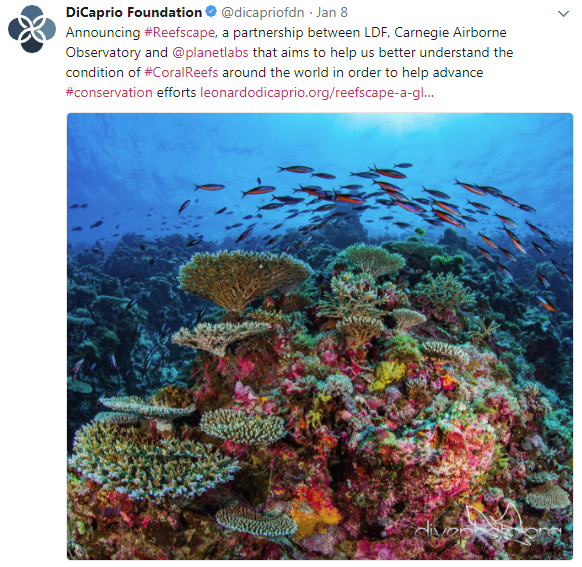File:Planting Corals Now.jpg: Difference between revisions
Siterunner (talk | contribs) No edit summary |
Siterunner (talk | contribs) No edit summary |
||
| Line 27: | Line 27: | ||
''This is why it's worth noting and celebrating that | ''This is why it's worth noting and celebrating that Dr. David Vaughan] of the Mote Marine Laboratory in Florida has found a way to make coral grow 40 times faster than coral currently does in the wild.'' | ||
''"He had been trying to remove a coral from the bottom of a tank when it broke into a dozen pieces. To his shock, all of the pieces regrew to the same size in just three short weeks, as opposed to the three years it had taken to grow the original coral."'' | ''"He had been trying to remove a coral from the bottom of a tank when it broke into a dozen pieces. To his shock, all of the pieces regrew to the same size in just three short weeks, as opposed to the three years it had taken to grow the original coral."'' | ||
Revision as of 23:29, 15 February 2019
Good News, Resilience, Coral Communities, Ocean Life
Scientist's accidental discovery makes coral grow 40x faster
There might be hope for our oceans, thanks to one clumsy moment in a coral tank
- Sarasota, Florida, Mott Marine Labs
It typically takes coral 25 to 75 years to reach sexual maturity. With a new coral fragmentation method, it takes just 3.
Scientists and conservationists plan to plant 100,000 pieces of coral around the Florida Reef Tract by 2019 and millions more around the world in the years to come.
The news has not been encouraging as of late if you are one to pay attention to either climate change or The Great Barrier Reef: coral reefs are an incubator of the ocean's ecosystem. They account for less than 1% of the ocean and yet manage to provide food and shelter to over one quarter of all marine species in the ocean, as well as support fish that ultimately feed over one billion people. This is why it was distressing to note — in addition to the world losing Ruth Gates, a scientist renowned for her advocacy for saving coral reefs — that two thirds of the Great Barrier Reef in Australia — the largest living structure in the world — had in effect been killed off as of last year (a process called 'bleaching') by the rise in temperature brought about by global warming and climate change.
Panoramic view of the Great Barrier Reef
This is why it's worth noting and celebrating that Dr. David Vaughan] of the Mote Marine Laboratory in Florida has found a way to make coral grow 40 times faster than coral currently does in the wild.
"He had been trying to remove a coral from the bottom of a tank when it broke into a dozen pieces. To his shock, all of the pieces regrew to the same size in just three short weeks, as opposed to the three years it had taken to grow the original coral."
Now, through a process of 'breaking up' the coral, Doctor Vaughan has seen the timeline shrink to three years ... results that will lead him to share the information with conservationists all around the world, with the hopes of planting 100,000 pieces of coral around the Florida Reef Tract by 2019 and millions more around the world in the years to come.
File history
Click on a date/time to view the file as it appeared at that time.
| Date/Time | Thumbnail | Dimensions | User | Comment | |
|---|---|---|---|---|---|
| current | 15:29, 15 February 2019 |  | 800 × 365 (72 KB) | Siterunner (talk | contribs) |
You cannot overwrite this file.
File usage
The following 6 pages use this file:



